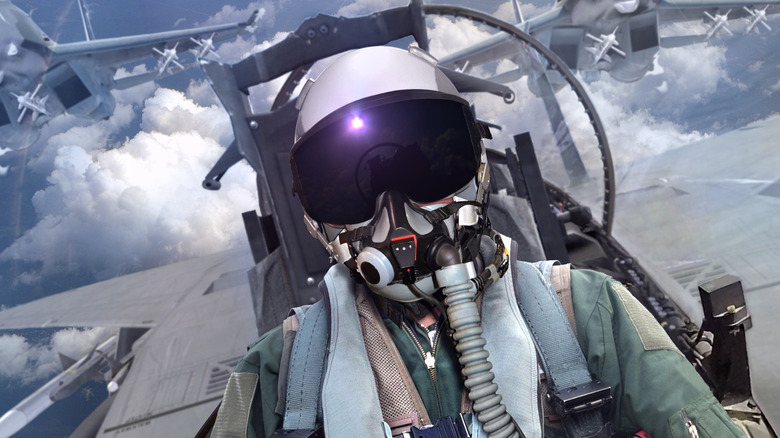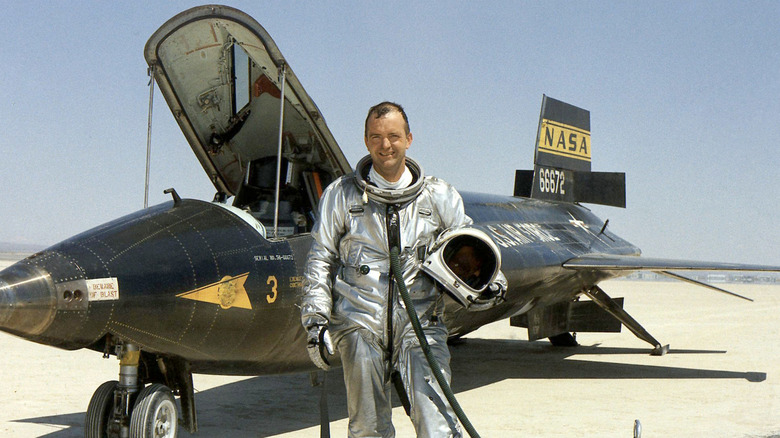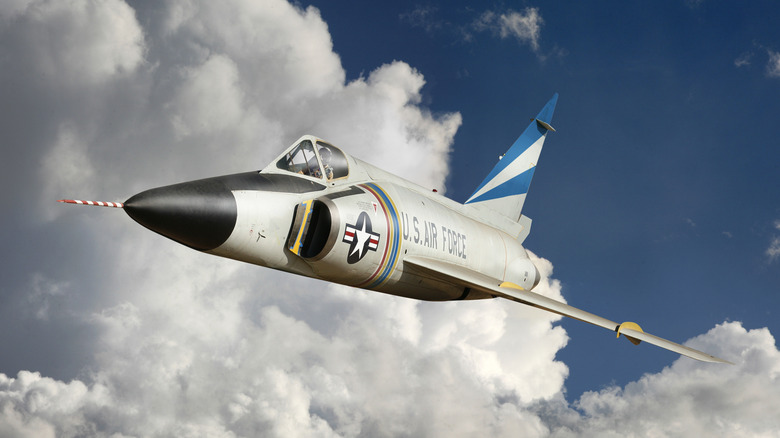How Fast Is Mach 10, And Can A Human Survive The Speed?
Humankind was once determined to break the sound barrier, as it was considered the ultimate achievement in speed. But our technology didn't stop there, as we've built experimental vehicles that can reach incredible speeds measured in terms of Mach, a unit that compares an object's speed to the speed of sound. As we push the boundaries of speed, we must understand what it means while also acknowledging what the human body can endure.
For an aircraft to hit Mach 10, it would need to travel about 7,600 miles per hour. This is 10 times the speed of sound, which is around 761 miles per hour and far exceeds any manned aircraft. But even if we do create a vehicle that hits Mach 10, a human probably wouldn't be able to survive the ride, as that speed would obliterate the pilot's body. Proper safety equipment would need to be developed and if that happens, then such a trip could perhaps become a reality.
If surviving Mach 10 while in an aircraft was somehow currently possible, ejecting at that speed definitely wouldn't be. So if something went wrong, there would be no way to escape. No matter how you look at it, Mach 10 is just not a survivable speed for humans, at least for now.
Manned and unmanned Mach speed records remain unbeaten
The United States' efforts to push the limits of speed paid off when Chuck Yeager broke the sound barrier in 1947. Going faster than Mach 1 opened the door to more research and testing in the years that followed, eventually leading to NASA's North American X-15 hitting Mach 6.7 in 1967. Not only did that flight make history, it's a speed that hasn't been topped in a manned craft since then.
By comparison, the Lockheed SR-71, also known as the Blackbird, only reached a top speed of Mach 3 during its years of service. The manned Air Force reconnaissance jet achieved that speed in 1976, while flying over 85,000 feet, setting new records for an aircraft in its class.
But when it comes to the fastest unmanned aircraft, nothing tops the X-43. Built by NASA, the X-43 was an experimental scramjet-powered aircraft that reached a mind-blowing speed of Mach 9.6 in 2004. The jet was released from a B-52 bomber for the flight, which lasted only 10 seconds. Once the X-43 reached its historic speed, it glided for 10 minutes, then crashed into the Pacific Ocean.
The human limits of Mach speed
Reaching Mach speeds affects the body mostly because of the intense acceleration forces, called G-forces, rather than just the speed. When a pilot pulls sharp turns or sudden moves at high speeds, these forces push blood away from or toward the head. High positive G-forces can cause vision to fade, first graying out, then blacking out, as the brain gets less blood. Negative G-forces do the opposite, causing a "red-out" and painful pressure in the eyes. Over time, dealing with these forces can lead to ongoing neck and back problems.
Flying faster also usually means going higher, which brings its own risks. At high altitudes, above about 25,000 feet, the lower air pressure can cause decompression sickness, or "the bends." This happens when nitrogen bubbles form in your blood and tissues, causing everything from joint pain to serious nerve damage, paralysis, or even death. The risk gets worse with fast climbs or long exposure. While myths about supersonic flight exist, it's so dangerous, that if a person were suddenly exposed to the outside air at supersonic speeds without protection, it would almost certainly mean death.
Astronauts re-entering Earth's atmosphere from the International Space Station travel around Mach 23, or roughly 17,500 mph, only because they're so well protected and the process is carefully controlled. As the spacecraft decelerates gradually over hundreds of miles, its special design allows it to handle both the thermal and physical stress, keeping everyone onboard safe.


